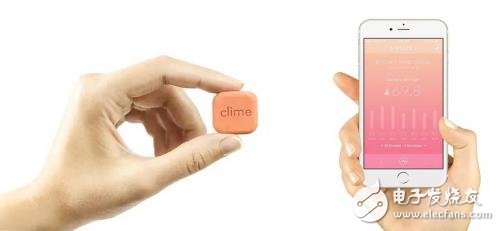The Internet of Things (IoT) has emerged as a dominant trend in the field of information technology. Smart devices now serve as carriers for sensors, enabling seamless interaction between people, machines, and the cloud. This integration allows smart devices to combine with artificial intelligence (AI), granting them "intelligence" and human-like perception, thus expanding their capabilities significantly. Currently, over 1,700 companies in China are involved in the research, production, and application of sensors. The industry is well-established, offering more than 6,000 sensor varieties across ten categories and 42 subcategories. These sensors play a central role in fields such as healthcare, urban planning, and transportation.
In 2017, the Ministry of Industry and Information Technology issued a policy proposal, while the Chinese Academy of Engineering launched 16 projects, including the industrialization of MEMS sensors, aiming to position this as a key project under the “Made in China 2025†initiative. As more devices benefit from the second wave of sensor innovation, the mission of the next generation of engineers, innovators, and artists is to explore the vast opportunities that data-driven systems offer.

**1. Introduction to Smart Sensors**
**1.1 The Concept of Smart Sensors**
The concept of smart sensors was first introduced by NASA during the development of spacecraft in 1979. According to the IEEE Association, smart sensors are those capable of providing controlled or perceived measurements and can be easily integrated into network environments. In the book *Modern New Sensors Principles and Applications*, smart sensors are defined as sensors equipped with microprocessors that can detect, store, and process information, as well as perform logical judgment.
Although no universally accepted definition exists, it is widely recognized that smart sensors possess capabilities such as automatic data collection, processing, self-diagnosis, and self-adaptation.
**1.2 Functions of Intelligent Sensors**
(1) **Self-compensation and self-diagnosis**: The embedded microprocessor can verify sensor output and provide diagnostic information, enabling self-diagnosis.
(2) **Information storage and memory**: Smart sensors can store historical data and parameters, enhancing controller performance.
(3) **Self-learning and adaptation**: With advanced programming, they can adjust structure and parameters based on behavior criteria.
(4) **Digital output**: Integrated analog-to-digital conversion allows direct digital signal output, reducing processing load on controllers.
**2. Application Fields and Development Status of Intelligent Sensors**
**2.1 Civil Engineering**
China, as a major civil engineering nation, faces challenges due to aging infrastructure like bridges, dams, and power plants. Smart sensors are crucial for monitoring structural health. Researchers at Harbin Institute of Technology developed fiber grating sensors for real-time monitoring of bridges, combining temperature and strain sensing for comprehensive health assessments.
**2.2 Medicine**
Medical sensors are vital in biomedicine, requiring high accuracy, reliability, and miniaturization. Wearable and implantable smart sensors have revolutionized medical monitoring. A team from Sun Yat-sen University created a real-time health monitoring system using Bluetooth-based wireless networks, allowing early detection of potential health risks.
**2.3 Cars and Traffic**
Intelligent transportation systems rely on smart sensors for real-time data collection. TPMS systems monitor tire pressure and temperature, preventing accidents. Infrared sensors in autonomous vehicles enable obstacle avoidance, while balance vehicles use internal sensors to control movement.
**2.4 Military and National Defense**
Smart sensors enhance battlefield awareness and reconnaissance. For example, US Marine Corps robots use sensors for diving operations and terrain mapping, supporting amphibious missions.
**2.5 Home Appliances**
Infrared sensors in smart air conditioners improve user comfort by adjusting settings based on environmental conditions. Cloud-connected systems also offer intelligent fire prevention features.
**2.6 Electronic Equipment**
Smart wearables like bracelets and rings use sensors to track health metrics and UV exposure, promoting healthier lifestyles.
**2.7 Agriculture**
Smart agriculture uses wireless sensor networks to monitor soil, air, and crop conditions, enabling efficient and intelligent farming practices.
**2.8 Ocean Exploration**
Wireless sensor networks help monitor marine environments in real time, supporting resource management and environmental protection efforts.
**2.9 Aerospace**
NASA employs smart sensors to monitor space shuttle components and launch vehicle health, ensuring safe and reliable operations.
wifi 6 xpon onu,ax3000 gpon onu,ax1800 catv gpon onu,ax1500 gpon onu,wifi 6 ont
Shenzhen Runtop Technology Co.LTD , https://www.runtoptech.com